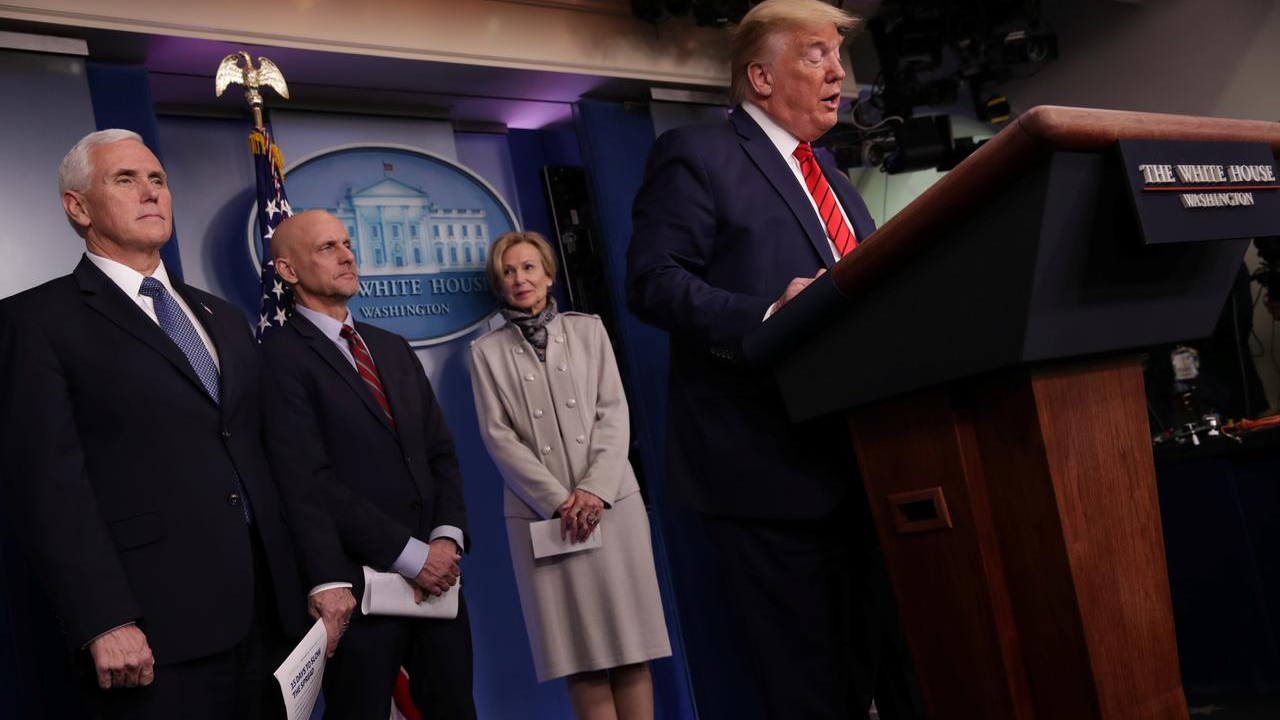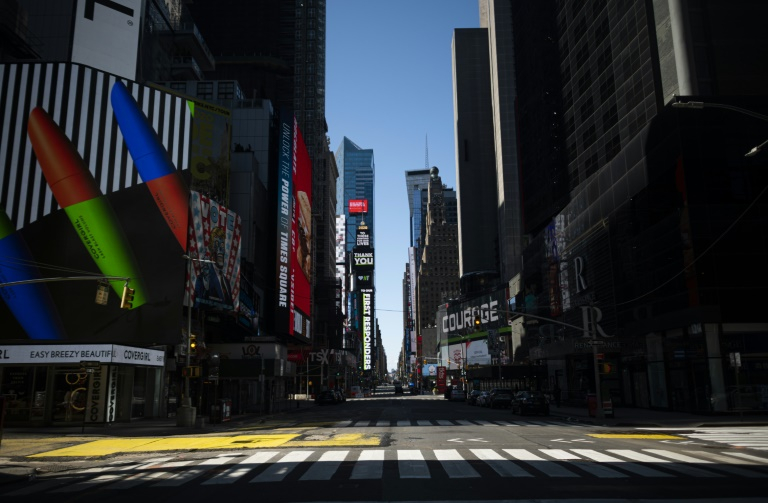
President Donald Trump addresses the coronavirus response daily briefing at the White House in Washington, DC, U.S., March 19, 2020. /Reuters
President Donald Trump addresses the coronavirus response daily briefing at the White House in Washington, DC, U.S., March 19, 2020. /Reuters
The Trump administration views May 1 as a target date for relaxing stay-at-home restrictions across the United States, Food and Drug Administration Commissioner Stephen Hahn said on Sunday.
However, he cautioned that it was still too early to say that target would be met.
"We see light at the end of the tunnel," he told ABC. However, there were many factors to take into account in finally determining when it would be safe to lift restrictions, he said.
"I think it's too early to be able to tell that."
President Donald Trump had earlier wanted the world's largest economy to be "raring to go" by Easter Sunday, but most of the country remained at a standstill and churches took celebrations online to halt the spread of the virus that has killed more than 20,000 people nationwide.
Trump has cast the decision on when to ease the lockdown as the biggest of his presidency as he faces competing pressures from public health experts and businesses along with some conservative allies who want a swift return to business as usual.
Anthony Fauci, the veteran pandemic expert who has quietly sought action to stem infections, said in a televised interview that parts of the country could begin easing restrictions in May, but was cautious.
"I think it could probably start at least in some ways maybe next month," Fauci, head of the National Institute of Allergy and Infectious Diseases, told CNN.
"We are hoping by the end of the month we can look around and say, OK, is there any element here that we can safely and cautiously start pulling back on?" Fauci said.
"If so, do it. If not, then just continue to hunker down."

Empty Time Square is seen in New York City, U.S., April 11, 2020. /AFP
Empty Time Square is seen in New York City, U.S., April 11, 2020. /AFP
Unlike in most Western countries, lockdown decisions are primarily up to local governments, not the president, and leaders of a number of hard-hit, densely populated states have vowed to act as long as necessary.
"We want to reopen as soon as possible," New York Governor Andrew Cuomo told reporters. "The caveat is we need to be smart in the way we reopen."
Neighboring New Jersey's governor, fellow Democrat Phil Murphy, said that an economic recovery depended on a "full health-care recovery."
"If we start to get back on our feet too soon, I fear, based on the data we're looking at, we could be throwing gasoline on the fire," Murphy said.
The United States, which has 4.25 percent of the world's population, accounts for almost a fifth of the world's nearly 110,000 deaths from COVID-19 since the disease was first reported in China late last year.
The New York Times, in an extensive article published Sunday, described Trump as failing to act quickly in part due to confidence in his gut instincts and his distrust of civil servants he brands as a conspiratorial "deep state."
Fauci, who has advised six successive presidents, acknowledged when asked about the article that the U.S. could have saved more lives by shutting down public spaces when the disease's seriousness became clear early in the year.
"But there was a lot of pushback about shutting things down back then," Fauci told CNN, without naming Trump.
Trump last week zeroed in on the World Health Organization to explain early difficulties, saying the UN body was overly reliant on China when illnesses first emerged in Wuhan.
Trump had been hoping to campaign on a strong economy as he seeks re-election in November. Instead, some 17 million people have lost their jobs in a matter of weeks and his presumptive Democratic rival, Joe Biden, has been hammering him over his virus response.
(With input from Reuters and AFP)